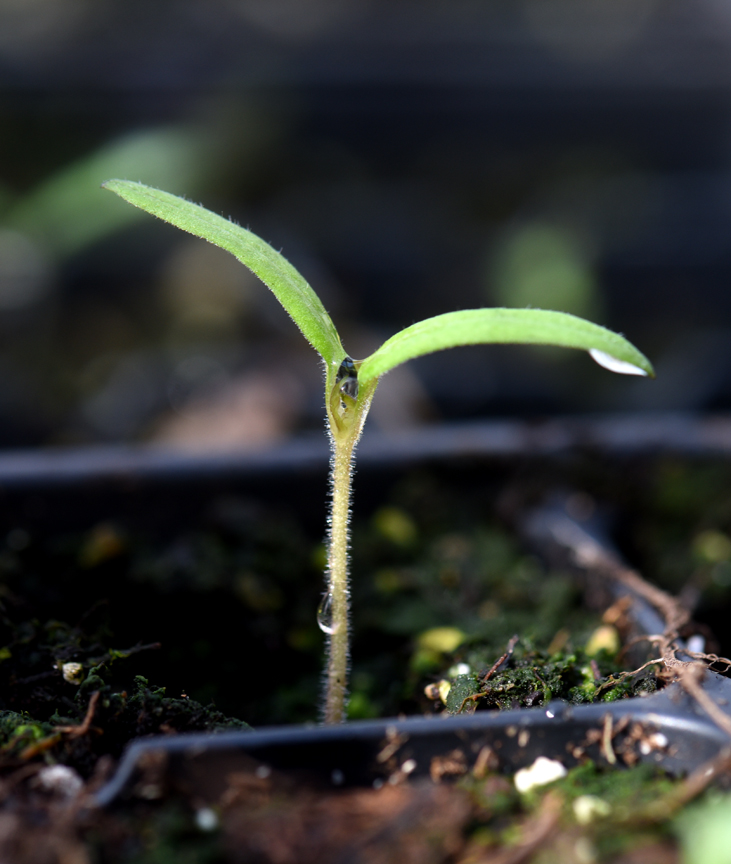
Gardening Green with Doug
Plant Prep: Starting Seeds Indoors
By Doug Oster
January 16, 2023
Seeds can be family heirlooms shared by like-minded gardeners, others found through recommendations, trial and error, or just stumbled onto in a catalog. One thing for sure, they are all part of the tapestry from a lifelong gardening journey.
As we hunker down for another endless winter, gardeners begin to long to plant again. Sure, everyone needs a break, but our minds start racing about what to plant, and where, while walking through the sleeping garden, accompanied by the sounds of songbirds in the distance looking for a mate.
As seed catalogs arrive, filled with the latest and greatest new varieties, it’s easy to throw caution to the wind and order like you were at a dinner buffet. Ordering seeds without knowing where the plants will go, is a mistake we all make. That’s why most gardeners end up with lots of seeds leftover through the seasons.
Before ordering more seeds, organize what’s already there. I like to categorize them by the dates they should be started. It assures me nothing will be forgotten during the madness of early season planting. Testing old seeds to see if they are viable is also important. I’ve got seeds dating back to the 1980s — every once and a while I’ll pull an old favorite to grow, but will make sure it’s not a fool’s errand by discovering if the seeds will actually sprout.
It’s fun to look back at those varieties — sometimes they are family heirlooms shared by like-minded gardeners, others found through recommendations, trial and error, or just stumbled onto in a catalog. One thing for sure, they are all part of the tapestry from a lifelong gardening journey.
Take about 10 of those saved seeds, fold them into a moist paper towel, put the towel in a resealable plastic bag, and put it somewhere warm. In seven to 10 days, take a look at what percentage germinated. For me, as long as it’s over 50 percent, I’ll plant them. Timing is everything when it comes to starting the seeds indoors. The only thing I start in January are the tiniest of seeds like coleus, begonias, and impatiens and the only reason I’m really doing that is to have some plants to tend to. It is pretty exciting though, to see those diminutive seeds sprout, and be ready to plant out in May.
Many of these smallest seeds are surface sowed, which is a little more complicated than traditionally burying the seeds with soil mix.
All seed starting begins with a moist planting mix, found at garden centers and nurseries, and then combined with water. The right consistency will stick together, but not drip when squeezed in hand. Don’t make the mistake of putting dry mix into containers and then adding the water — it can be done, but the mix doesn’t take the moisture well.
For surface sowing, the seeds are sprinkled on top of the planting mix and pushed into the soil with a small wooden block. I like to spritz the newly planted seeds with water right after sowing. Everything else about planting these littles seeds mimics the instructions below.
Next up for sowing, maybe a few peppers in February as the seeds often take weeks to germinate. They benefit from bottom heat provided by a seed starting mat to speed up sprouting.
The main crop of annual flowers and vegetables like tomatoes get started in March. There’s a long list of plants that are started indoors including peppers, tomatoes, cole crops like cabbage and broccoli, eggplant, marigolds, and many others.
Plants like beans, radishes, peas, cucumbers, squash, zinnias, and a host of others are best started by direct sowing in the garden.
The first place to look for seeds is at the local nurseries, most carry two or three brands with hundreds of different varieties. Get out and shop early as the explosion in gardening due to Covid is expected to continue.
Starting from seed is pretty easy. The biggest mistake for beginners is not having a good light source. Seedlings need something bright like LED lighting. There are a variety of different types available at garden centers and nurseries.
To get started, get some planting mix, flats, and containers with drainage. In my operation, I save the six packs from last year’s flowers. The containers are filled with a pre-moistened mix as explained above for surface sowing. The seeds are sprinkled on to the mix, then a little more of the mix is laid on top and pressed in to assure good contact between seed and soil.
Then, cover the entire container with clear plastic (surface sowed too) and keep in a warm spot until germination begins. The plastic is removed and in a couple weeks at germination.
Thin any sprouts to give them room to grow. I can’t toss thinnings in the compost; they are repotted to grow alongside all the other sprouts. Start liquid fertilization at half strength, then two weeks later use the full concentration as prescribed on the label.
From day one, the seedlings should be under bright light for at least 16 hours; the light source should be as close as possible to the plants. As the plants grow, the lights are moved up. These tender transplants need to be toughened up before facing the rigors of spring weather in a process called hardening off.
The plants are taken outside for a few hours at first, then time outdoors is increased over the next seven days until eventually they spend all day out there.
There are lots of reasons to start seed indoors. For cheapskates like me, it’s a way to save money. There’s also a wonderful sense of satisfaction growing your own transplants, watching those little seeds reach fruition in just a few short months is something special. Sharing your extra transplants with other gardeners is also one of the great things about growing from seed.
Maybe the best thing though is the ability to grow something different — the part of indoor seed sowing which is most rewarding.
Free tomato seeds, originally found on WWII battlefield
The late Joe Roberts served overseas during WWII and stumbled onto a field of delicious tomatoes. He actually saved some seeds in his uniform and brought them back to Pittsburgh, growing them out for over 50 years.
The full story is here.
The tomato was named ‘3945,’ for the years the war lasted. The plants produce large tomatoes which are reddish-orange with a texture that’s both meaty and juicy, with lots of tiny seeds and a wonderful old-fashioned flavor.
If you would like to try the variety, all I ask is that you grow out the tomato and send some of the seeds back to me.
Instructions for planting and seed saving are included with each seed packet.
To receive some ‘3945’ seeds, send and self-addressed stamped envelope to:
Doug Oster
3945
P.O. Box 11013
Pittsburgh, PA 15237
DOUG’S FAVORITE SEED SOURCES —
Baker Creek Heirloom Seeds was started by Jere Gettle as a teenager in 1998 and has grown to be one of the biggest seed companies in the world. Unique selections of seeds and great prices too.
John Scheepers Kitchen Garden Seeds is filled with good stuff for the garden, take a look at their catalog, you’ll be happy you did.
J.L. Hudson Seedsman is my favorite “off the beaten path” catalog. No photos and filled with the most unusual and wonderful seeds. Want to grow something different, check them out.
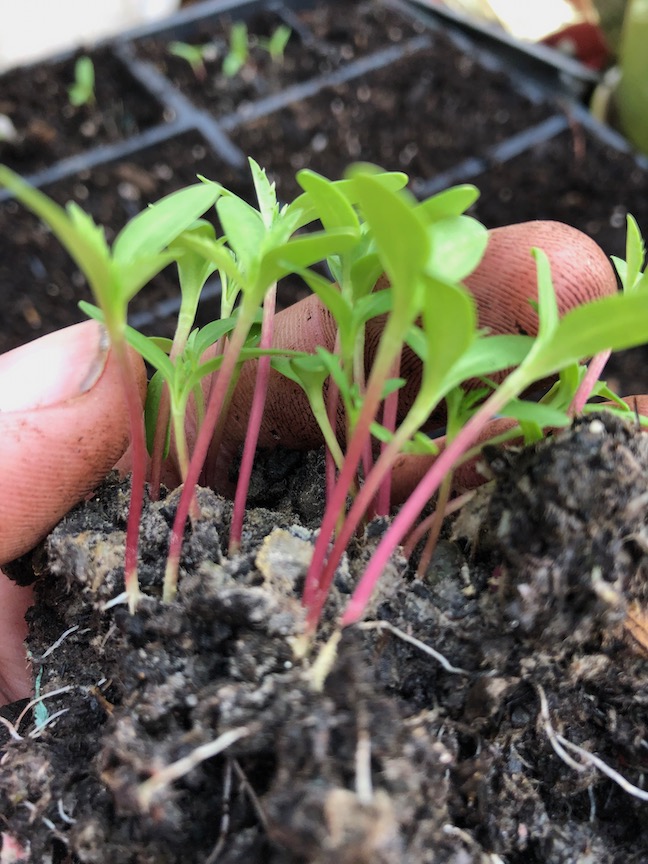
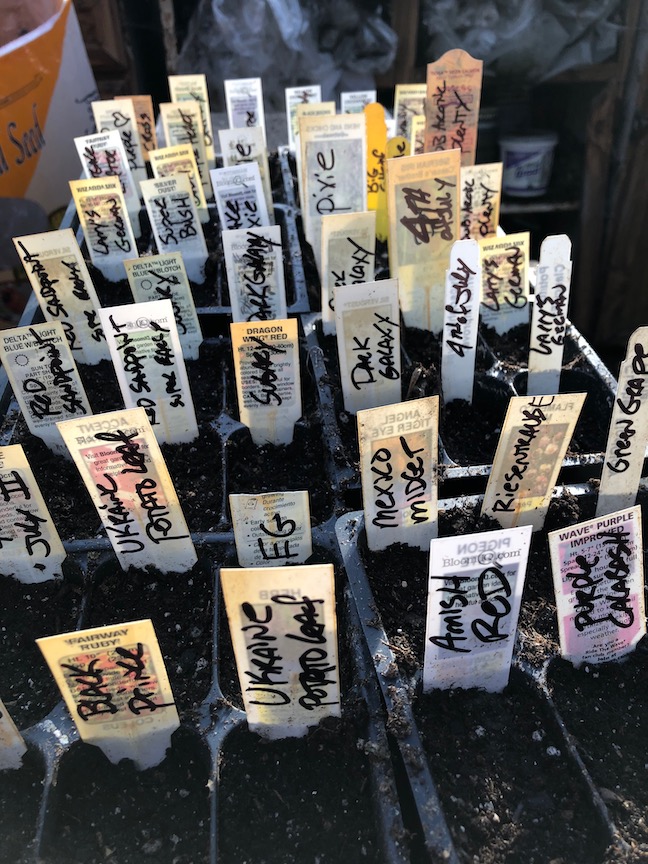
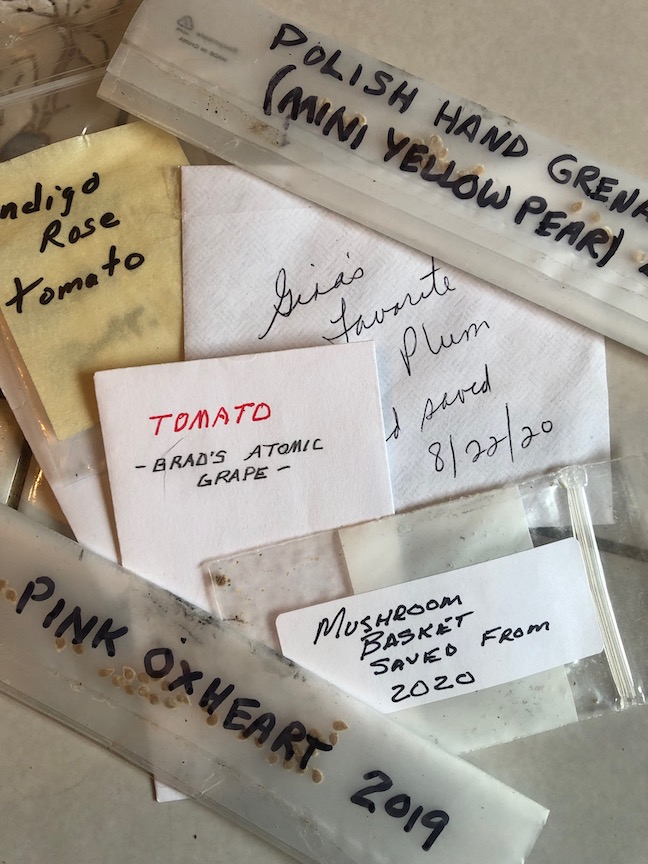
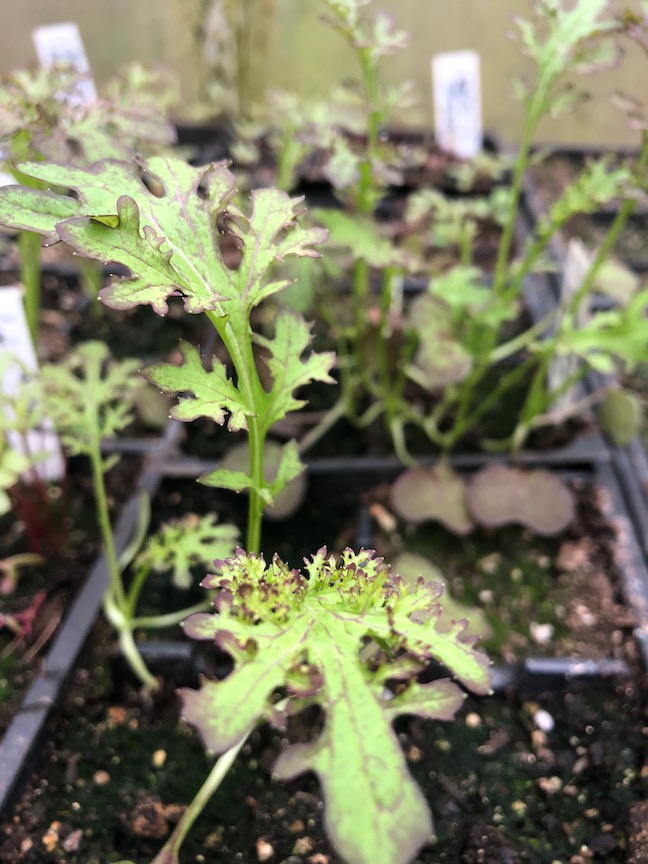
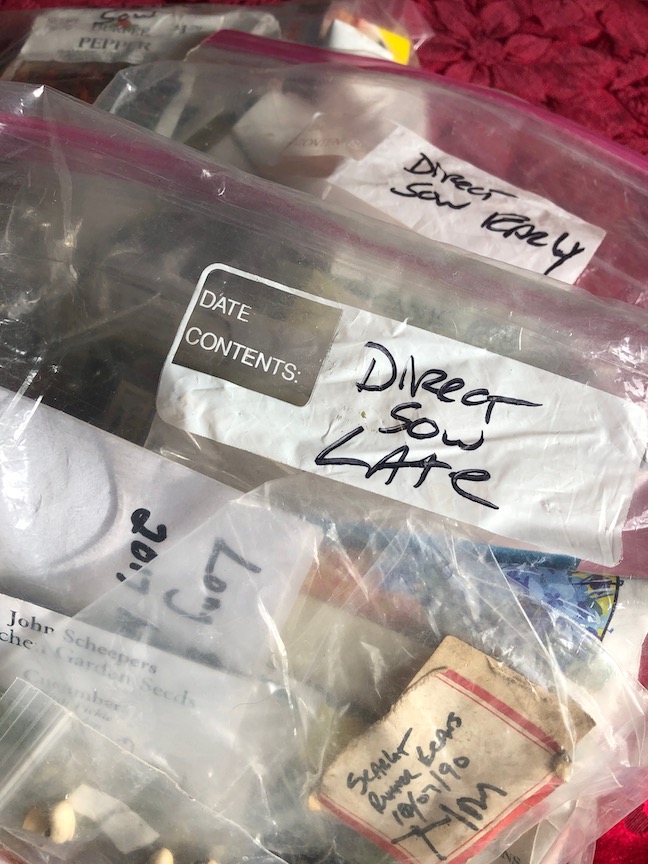


Great article, especially for us fellow cheapskates.
Any plum tomatoes seeds you care to recommend? That’s my favorite size.